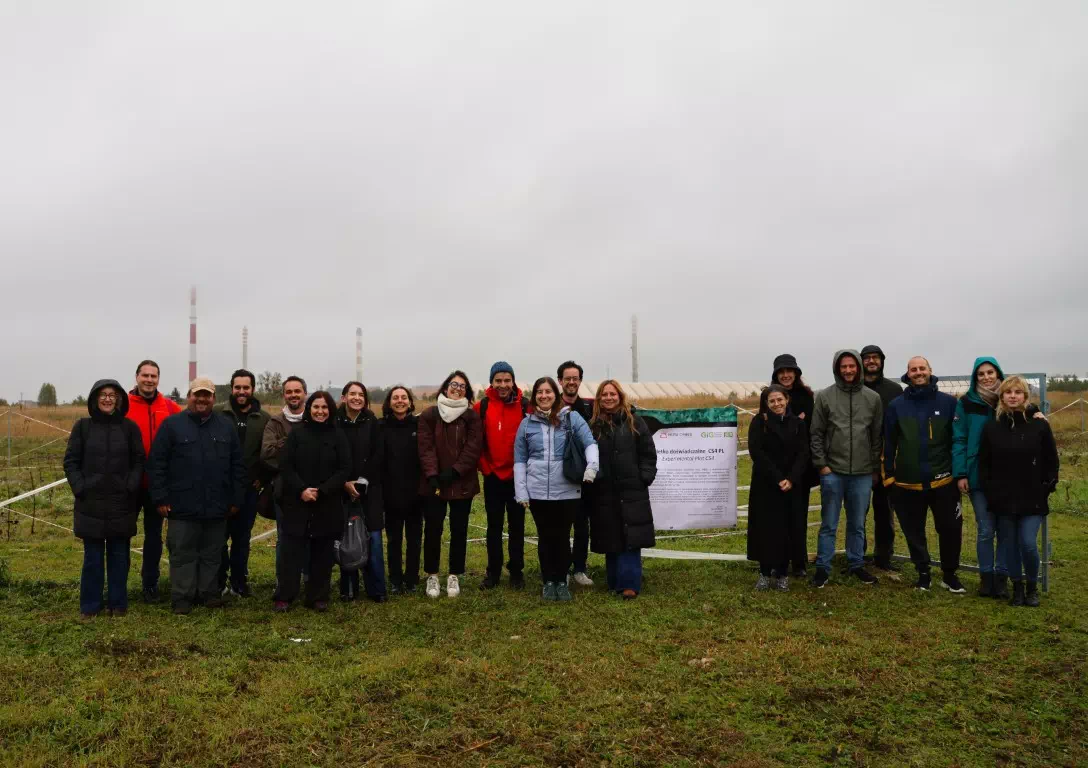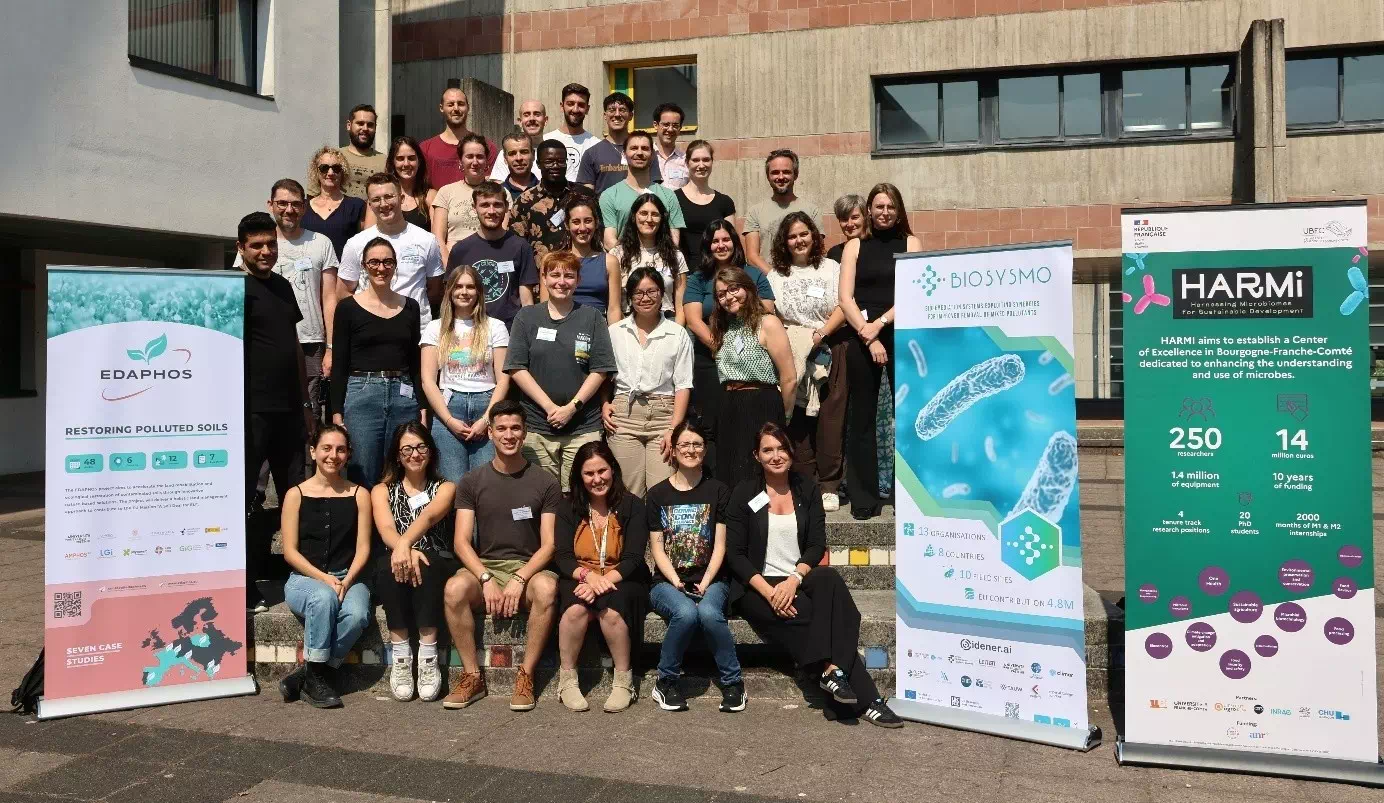We are situated in the northwest of Paris: Carrières-sous-Poissy. There, lies a 330-hectare agricultural site that tells a story many European sites know, and currently managed by Seine-yvelines-environnement . During the 20th century, this site received an influx of raw wastewater, leaving behind moderate contamination with heavy metals such as cadmium, lead, and zinc. As part of the EDAPHOS case study 1 (CS1), one hectare of this site has been dedicated to research activities, focusing on harnessing phytoextraction and phytostabilisation to remediate the land.
A glimpse into our fieldwork
Our dedicated team at Université Marie & Louis Pasteur, carried out intensive fieldwork at Carrières-sous-Poissy. Here is what we achieved on site:
- Extensive Soil Sampling:We collected several hundred kilograms of soil to initiate controlled experiments in our growth chamber. Additionally, in each experimental plot, several hundred grams of soil were sampled to assess the initial physico-chemical and ecotoxicological state, with valuable support from INERIS.
- Precise Plot Delimitation:Following a detailed mapping process, plots were precisely delimited. Each plot measures 3.75 x 3.75 meters, with a 2-meter gap between them to ensure accurate and reliable data collection.
- Poplar Tree Establishment:In a bid to harness the natural depollution capabilities of poplars, 384 trees were planted across the experimental plots. The poplars are spaced 0.75 meters apart, creating an ideal setup for phytoextraction and phytostabilization studies.
- Co-cropping Experiments:To understand the optimal conditions for remediation, we established four experimental plots dedicated to testing the effect of co-cropping on poplar performance.
Looking Ahead: Expansion to Vieux-Charmont
The successful implementation of these activities at Carrières Sous Poissy sets a solid foundation for our future work. We are excited to announce that a similar process will soon be rolled out at the Vieux-Charmont site, further testing our research and impact.
Join the Conversation
How do you see these innovations impacting the future of environmental restoration? Tell us now!
Stay tuned for more updates on our journey and sign up to our newsletter!
Credits:
Thanks to GIP Seine & Yvelines Environnement as major regional players.



